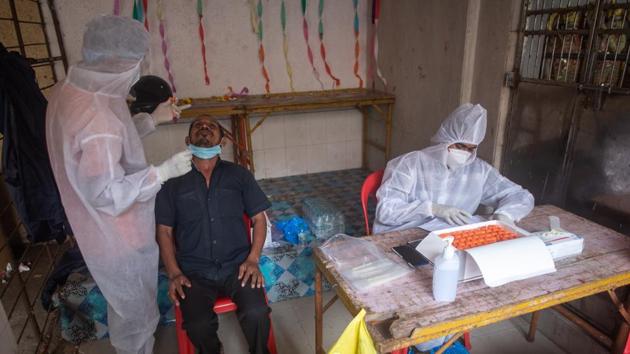Covid-19: What you need to know today
With more countries, and, in India, more states and cities conducting antibody tests on a sample of the population to assess the prevalence of the coronavirus disease and understand just what proportion of people have antibodies against the virus, herd immunity is one of those concepts that is always likely to be in the news.
It is yet another mystery surrounding coronavirus disease numbers. South Africa, the S of the expanded BRICS grouping — C, China was where it all began, R, Russia is at #4 in terms of cases, I, India, is at #3, and B, Brazil is at #2 — is the fifth in the world in terms of number of Covid-19 cases. It has seen close to 600,000; yet, the next country from the African continent on the list is Egypt, at #29. Then comes Nigeria at #49. Then starting with Morocco at #52, come another 16 countries within the top 100. Egypt has seen fewer than 100,000 cases; Nigeria, a little less than 50,000. The numbers are all from worldometers.info as of Monday evening.

Experts, including some from Africa, caution against taking the numbers at face value — most African countries aren’t testing enough, and record-keeping is poor in many. Others point to the low case fatality rates in South Africa and Nigeria (just around 2% in both) and say the high incidence of infectious diseases in Africa may have given its people some level of protection against the SARS-CoV2 virus which causes Covid-19. Egypt, with a fatality rate of 5.3% is an exception.
Also read: Govt kick-starts talks to explore Covid-19 vaccine deal
The relatively slow march of Covid-19 through Africa, and the low fatality rates have encouraged talk of how countries on the continent could well follow the strategy that the United Kingdom erroneously tried to adopt at the beginning of the pandemic — aspire for herd immunity. It is likely the results of such an approach will be similar to what they were in the UK — a near disaster, and a sharp U-turn into a more conventional test-trace-isolate-treat strategy.
Click here for complete coronavirus coverage
With more countries, and, in India, more states and cities conducting antibody tests on a sample of the population (sero-surveys as they are called) to assess the prevalence of the disease and understand just what proportion of people have antibodies against the virus (and are, therefore, immune), herd immunity is one of those concepts that is always likely to be in the news. Delhi, where a random sero-survey across 11 districts showed that almost one in every four of those examined had been exposed to the disease, has completed its second sero-survey, and its results are expected later this week. It will be interesting to see whether its results match that of the first survey. From Delhi’s perspective, the best result will be a number that is higher than the 23% of the first survey (which was conducted in late June and early July; the second survey was conducted in early August; Delhi plans to conduct one every month). A higher number will mean more residents of the Capital have been exposed to the disease, and that the city is a step closer to achieving herd immunity.
A similar exercise in Mumbai (not as representative, though, because of its smaller sample and restricted coverage) came up with the finding that 57% of those surveyed in slums and 16% of those surveyed in apartments (or residential societies) had been exposed to the disease. On Monday, Pune’s first sero-survey (covering 1,664 people and conducted in late July and early August) showed consistently high exposure to the virus across the city’s five administrative zones (from 36% to 65%), with 56-62% of those who live in slums, 44% of those who reside in bungalows, and 33% of apartment dwellers having been exposed to it. Pune is India’s worst affected city after Delhi, but these numbers, while unrepresentative, should bring it some cheer.
Also read: Many delaying treatments for fear of Covid, putting their lives at risk, say doctors
Pune’s numbers are close to the new estimates for herd immunity that experts are moving towards. A paper released on August 14 in Science, based on a mathematical model by researchers at the University of Nottingham and Stockholm University that took into account differences in age and activity levels in a population found that the herd immunity for Covid-19 could be around 40% (a June news report based on the same research put the number at 43%). The model does not take into account two other factors: not everyone exposed to the disease gets infected; and not everyone who gets infected passes it on to others. That would seem to suggest that the actual herd immunity level for Covid-19 may be lower, although this can only be established by more (and deeper) research. Still, if that is the case, and Pune, Mumbai, and Delhi’s numbers hold up to scrutiny, they are either safe or on their way there.






